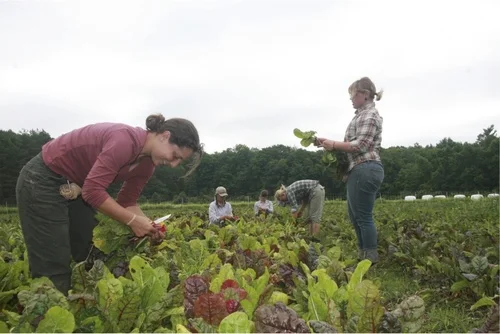Thanks to everyone who joined us for last weekend’s Soil Saturday walk at Hawthorne Valley Farm! We’re so grateful for each person’s unique presence and what we all shared through the walk as a group. We’re looking forward to reflecting on the walk series here on the blog in November.
Soil Saturdays with the Institute for Mindful Agriculture at Hawthorne Valley Farm are immersive experiences in the sometimes hidden elements of a living farm. Soil is something that is the basis of all our food, clothing and shelter, yet many of us aren’t aware of the incredible, lively set of relationships that it is. Healthy soil sticks together. It’s a place for exchange and transformation; a medium for discovery and expression. As a society we have a fatal disconnect from the actual soil beneath our feet. We also share troubling disconnects from one another- there’s a social soil among us that we rarely see or intentionally cultivate as such. Many of us also experience disconnection from ourselves. Meditation, prayer, ceremony, celebration are designed to cultivate these connections. Soil Saturday walks are 3 hour-tours of how these three soils are interdependent and can be cultivated through holistic experience and observation.
The walks blend 3 lenses on soil and the life of the farm: biodynamic farming, exploring and observing directly through the senses, and participatory art-science projects.
These past saturdays have brought blue skys where one participant noted that the morning had the chill and aroma of fall, but summer’s intense heat still bloomed and burned by midday. Once gathered and acquainted with one another, we’re ready for a tour of the farmscape, living soil, and the many beings that make up the farm “super organism”.
One way to describe what can happen during a Soil Saturday walking tour of the farm is what David Fleming calls “encounter,” the act of recognizing the being-ness of another.
Encountering another being in the farmscape is an opportunity to hook into a wider sense of how the lives of the farm fit together- as a “whole farm organism” and as part of the larger socio-ecological web of being.












